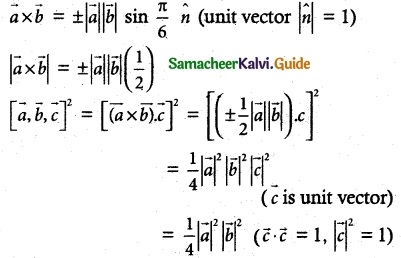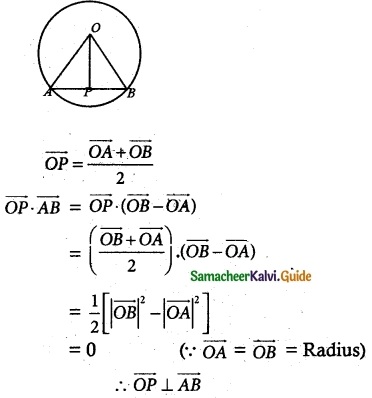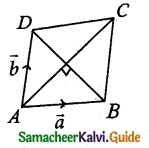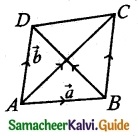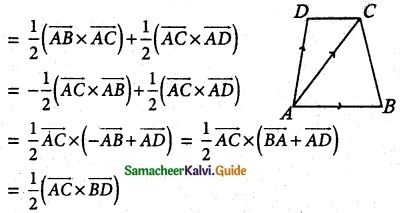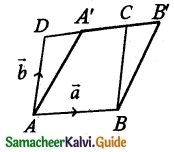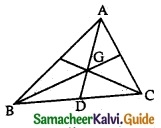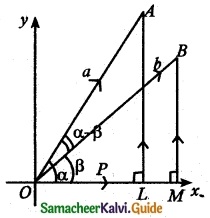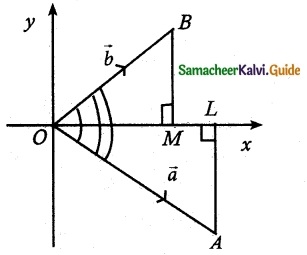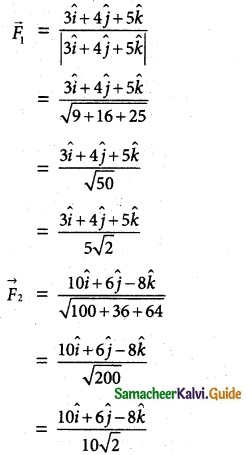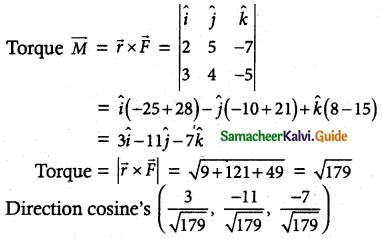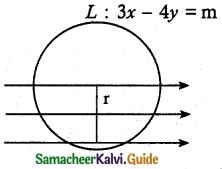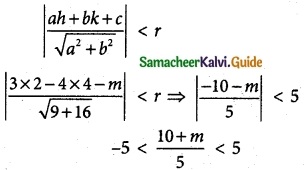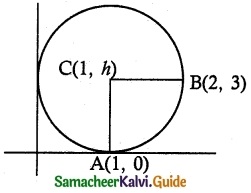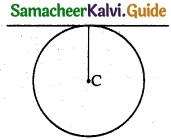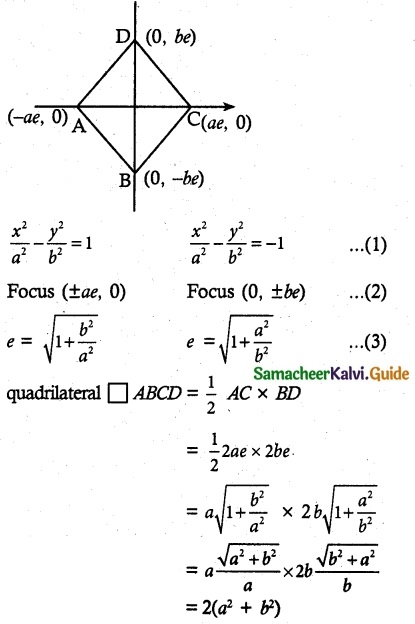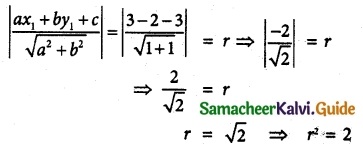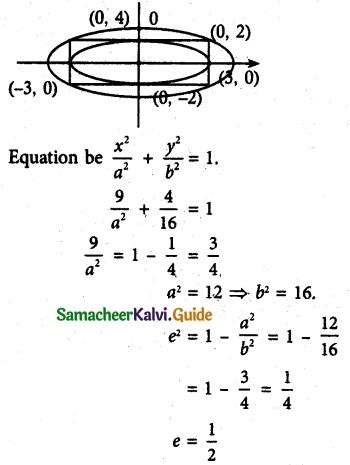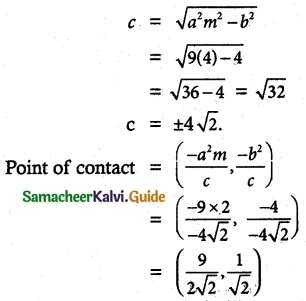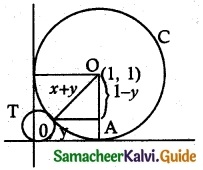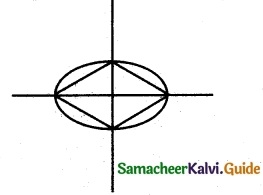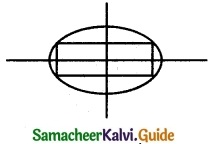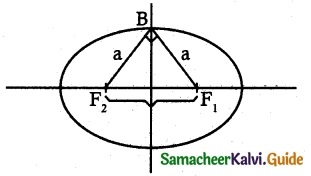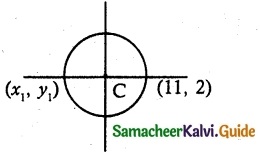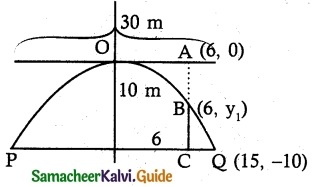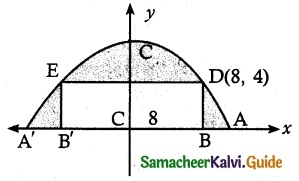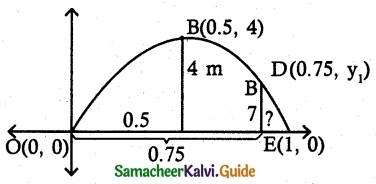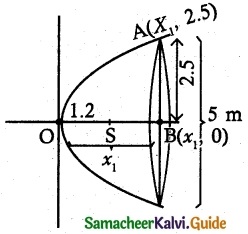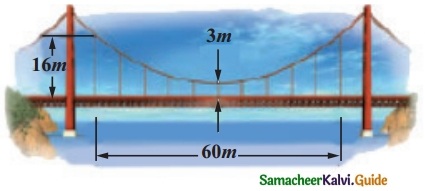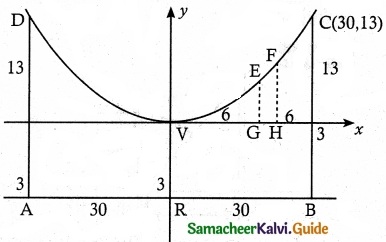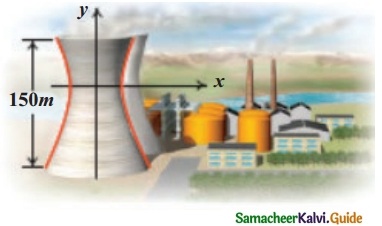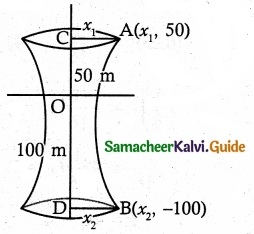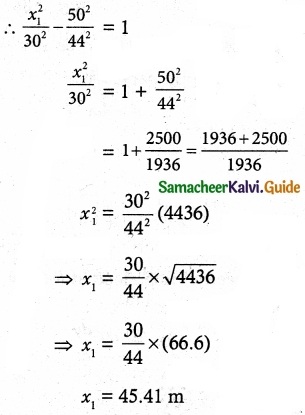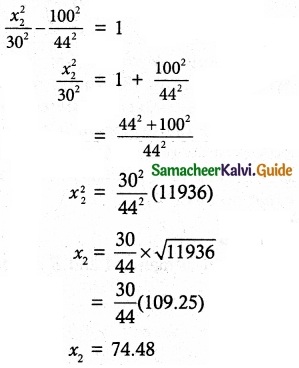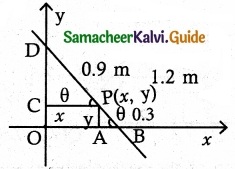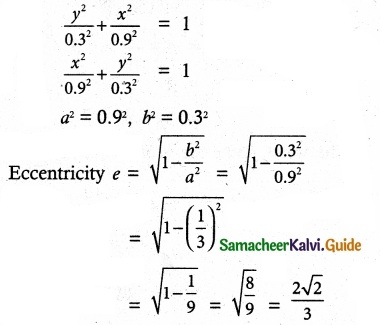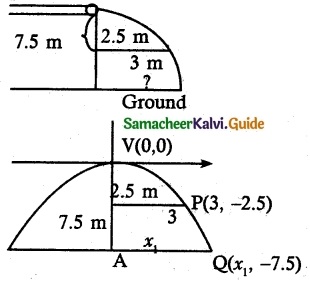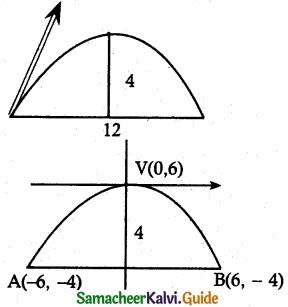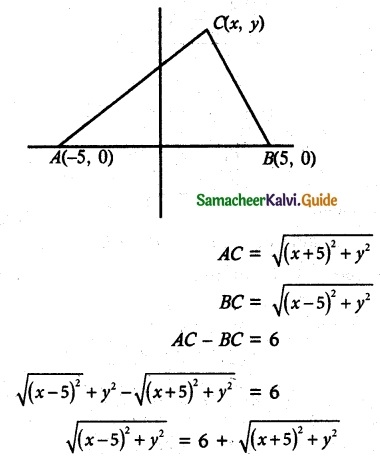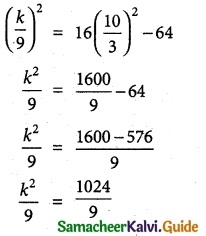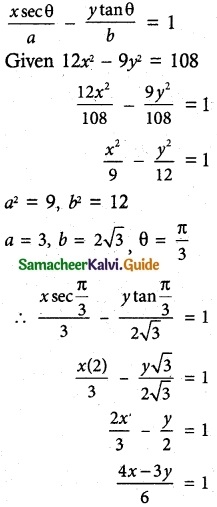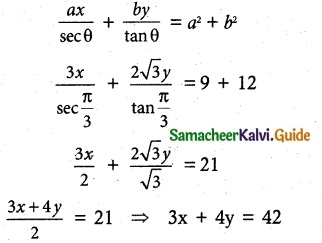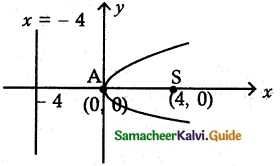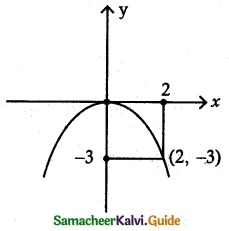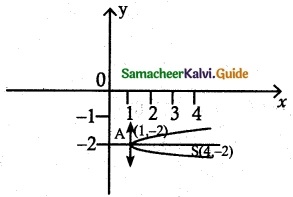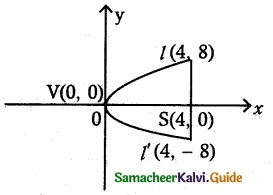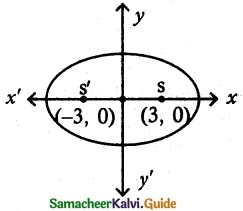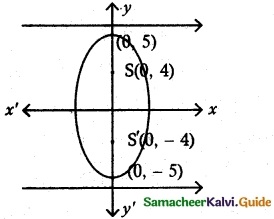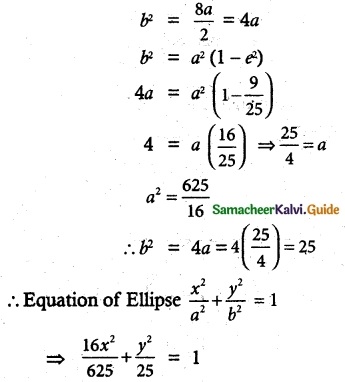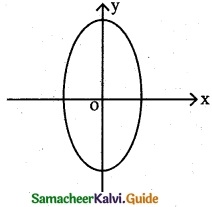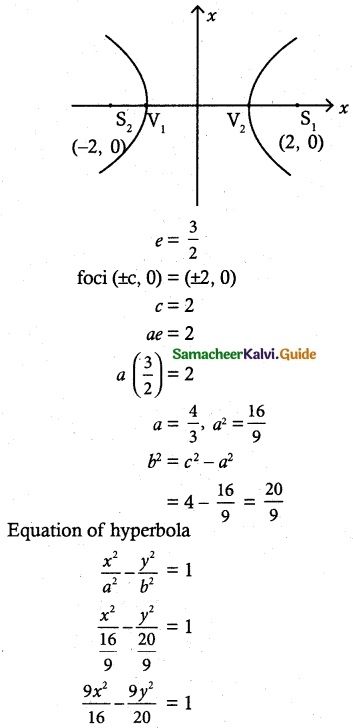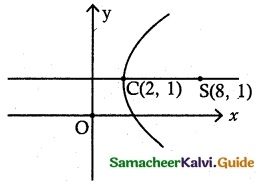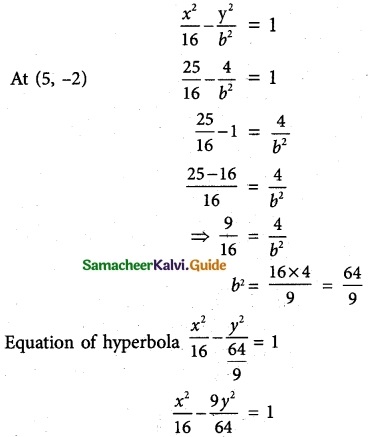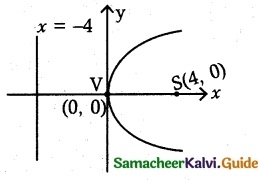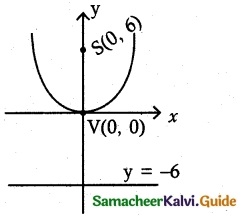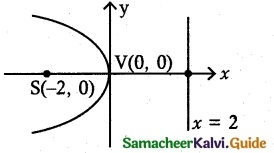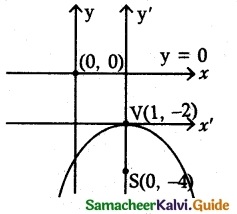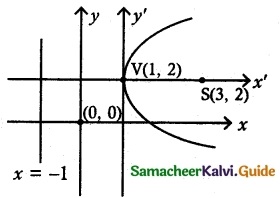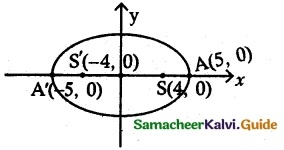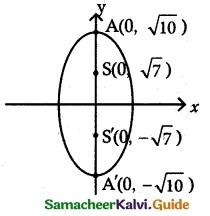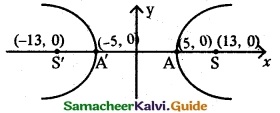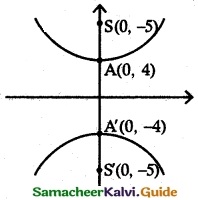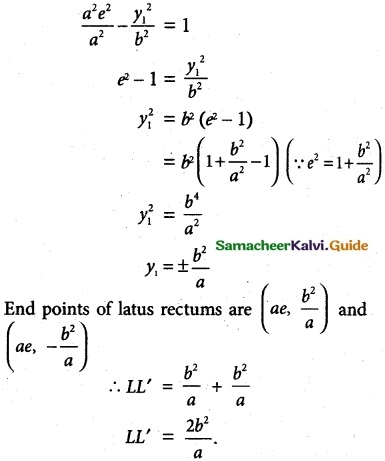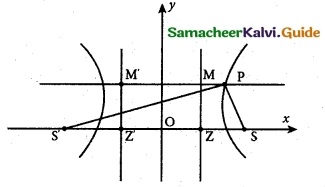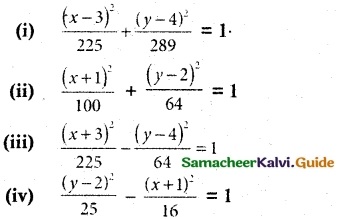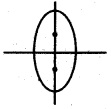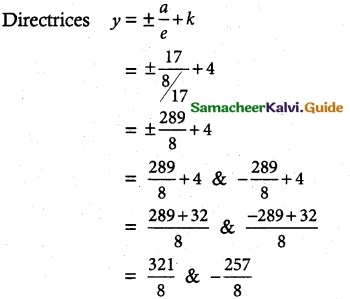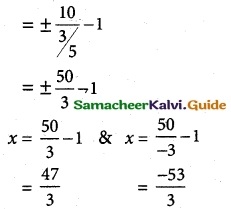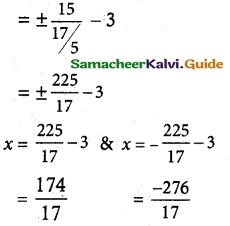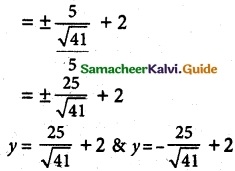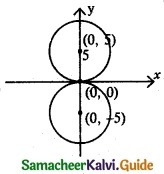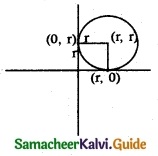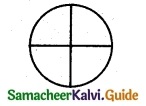Tamilnadu State Board New Syllabus Samacheer Kalvi 12th Maths Guide Pdf Chapter 6 Applications of Vector Algebra Ex 6.3 Textbook Questions and Answers, Notes.
Tamilnadu Samacheer Kalvi 12th Maths Solutions Chapter 6 Applications of Vector Algebra Ex 6.3
Question 1.
If \(\overline { a }\) = \(\hat { i }\) – 2\(\hat { j }\) + 3\(\hat { k }\), \(\overline { b }\) = 2\(\hat { i }\) + \(\hat { j }\) – 2\(\hat { k }\), \(\overline { c }\) = 3\(\hat { i }\) + 2\(\hat { j }\) + \(\hat { k }\)
Find (i) (\(\overline { a }\) × \(\overline { b }\) ) × \(\overline { c }\)
(ii) \(\overline { a }\) × (\(\overline { b }\) × \(\overline { c }\))
Solution:
(i) \(\overline { a }\) × \(\overline { b }\) = \(\left|\begin{array}{ccc}
\hat{i} & \hat{j} & \hat{k} \\
1 & -2 & 3 \\
2 & 1 & -2
\end{array}\right|\)
= \(\hat { i }\)(4 – 3) – \(\hat { j }\)(-2 – 6) + \(\hat { k }\)(1 + 4)
= \(\hat { i }\) + 8\(\hat { j }\) + 5\(\hat { k }\)
\(\overline { a }\) × \(\overline { b }\) × \(\overline { c }\) = \(\left|\begin{array}{lll}
\hat{i} & \hat{j} & \hat{k} \\
1 & 8 & 5 \\
3 & 2 & 1
\end{array}\right|\)
= \(\hat { i }\)(8 – 10) – \(\hat { j }\)(1 – 15) + \(\hat { k }\)(2 – 24)
= -2\(\hat { i }\) + 14\(\hat { j }\) – 22\(\hat { k }\)
(ii) \(\overline { b }\) × \(\overline { c }\) = \(\left|\begin{array}{ccc}
\hat{i} & \hat{j} & \hat{k} \\
2 & 1 & -2 \\
3 & 2 & 1
\end{array}\right|\)
= \(\hat { i }\)(1 + 4) – \(\hat { j }\)(2 + 6) + \(\hat { k }\)(4 – 3)
= 5\(\hat { i }\) – 8\(\hat { j }\) + \(\hat { k }\)
\(\overline { a }\) × \(\overline { b }\) × \(\overline { c }\) = \(\left|\begin{array}{ccc}
\hat{i} & \hat{j} & \hat{k} \\
1 & -2 & 3 \\
5 & -8 & 1
\end{array}\right|\)
= \(\hat { i }\)(-2 + 24) – \(\hat { j }\)(1 – 15) + \(\hat { k }\)(-8 + 10)
= 22\(\hat { i }\) + 14\(\hat { j }\) + 2\(\hat { k }\)
![]()
Question 2.
For any vector a, prove that
\(\hat { i }\)(\(\overline { a }\) × \(\hat { i }\)) + \(\hat { j }\) × (\(\overline { a }\) × \(\hat { j }\)) + \(\hat { k }\) × (\(\overline { a }\) × \(\hat { k }\)) = 2\(\overline { a }\).
Solution:
Let \(\overline { a }\) = a1\(\hat { i }\) + a2\(\hat { j }\) + a3\(\hat { k }\)
\(\overline { a }\) × \(\hat { i }\) = \(\left|\begin{array}{ccc}
\hat{i} & \hat{j} & \hat{k} \\
a_{1} & a_{2} & a_{3} \\
1 & 0 & 0
\end{array}\right|\)
= \(\hat { i }\)(0) – \(\hat { j }\)(-a3) + \(\hat { k }\)(0 – a2)
\(\hat { i }\) × (\(\overline { a }\) × \(\hat { i }\)) = \(\left|\begin{array}{ccc}
\hat{i} & \hat{j} & \hat{k} \\
1 & 0 & 0 \\
0 & a_{3} & -a_{2}
\end{array}\right|\)
= \(\hat { i }\)(0) – \(\hat { j }\)(-a2) + \(\hat { k }\)(a3)
= a2\(\hat { j }\) + a3\(\hat { k }\)
Similarly \(\hat { j }\) × (\(\overline { a }\) × \(\hat { j }\)) = a1\(\hat { i }\) + a3\(\hat { k }\)
\(\hat { k }\) × (\(\overline { a }\) × \(\hat { k }\)) = a1\(\hat { i }\) + a2\(\hat { j }\)
\(\hat { i }\) × (\(\overline { a }\) × \(\hat { i }\)) + \(\hat { j }\) × (\(\overline { a }\) × \(\hat { j }\)) + \(\hat { k }\) × (\(\overline { a }\) × \(\hat { k }\))
= 2a1\(\hat { i }\) + 2a2\(\hat { j }\) + 2a3\(\hat { k }\)
= 2(a1\(\hat { i }\) + a2\(\hat { j }\) + a3\(\hat { k }\))= 2 \(\overline { a }\)
Question 3.
Prove that [\(\overline { a }\) – \(\overline { b }\), \(\overline { b }\) – \(\overline { c }\), c – a] = 0.
Solution:
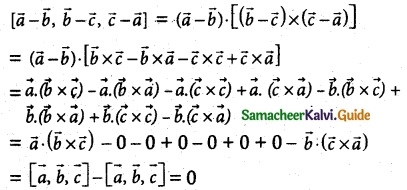
Hence proved.
![]()
Question 4.
If \(\overline { a }\) = 2\(\hat { i }\) + 3\(\hat { j }\) – \(\hat { k }\), \(\overline { b }\) = 3\(\hat { i }\) + 5\(\hat { j }\) + 2\(\hat { k }\), \(\overline { c }\) = –\(\hat { i }\) – 2\(\hat { j }\) + 3\(\hat { k }\)
(i) (\(\overline { a }\) × \(\overline { b }\)) × \(\overline { c }\) = (\(\overline { a }\). \(\overline { c }\))\(\overline { b }\) – (\(\overline { b }\).\(\overline { c }\))\(\overline { a }\)
(ii) \(\overline { a }\) (\(\overline { b }\) × \(\overline { c }\)) = (\(\overline { a }\). \(\overline { c }\))\(\overline { b }\) – (\(\overline { a }\).\(\overline { b }\))\(\overline { c }\)
Solution:
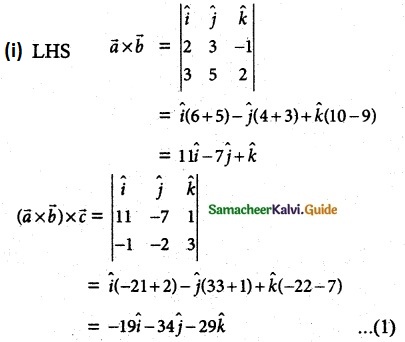
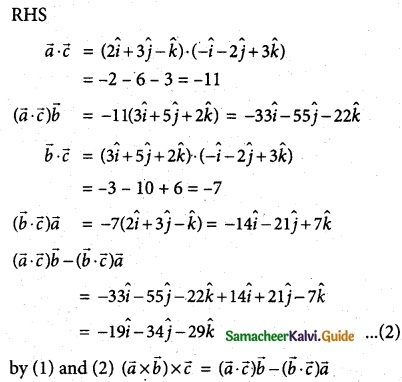
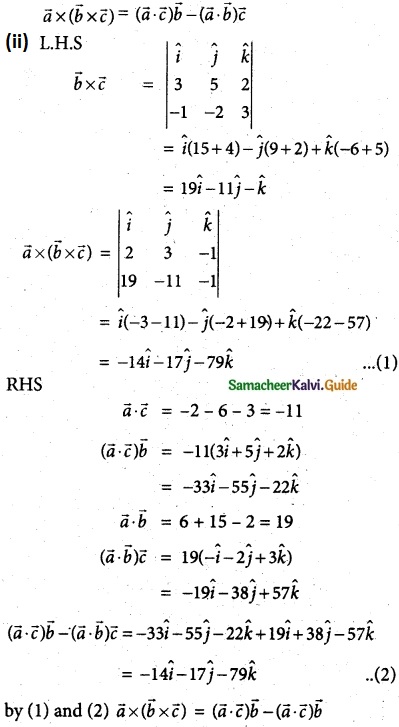
Question 5.
\(\overline { a }\) = 2\(\hat { i }\) + 3\(\hat { j }\) – \(\hat { k }\), \(\overline { b }\) = –\(\hat { i }\) + 2\(\hat { j }\) – 4\(\hat { k }\), \(\overline { c }\) = \(\hat { i }\) + \(\hat { j }\) + \(\hat { k }\) then find the value of (\(\overline { a }\) × \(\overline { b }\)) – (\(\overline { a }\) × \(\overline { c }\))
Solution:
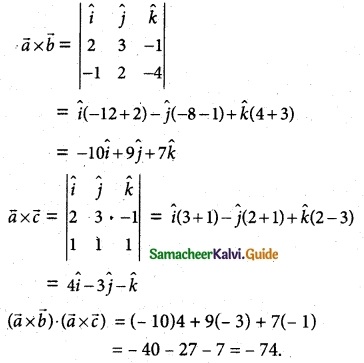
![]()
Question 6.
If \(\overline { a }\), \(\overline { b }\), \(\overline { c }\) and \(\overline { d }\) are coplanar vectors, show that (\(\overline { a }\) × \(\overline { b }\)) × (\(\overline { c }\) × \(\overline { d }\)) = \(\overline { 0 }\)
Solution:
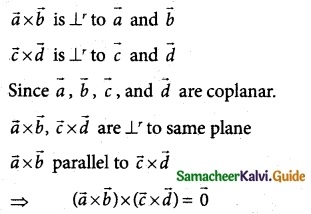
Question 7.
If \(\overline { a }\) = \(\hat { i }\) + 2\(\hat { j }\) + 3\(\hat { k }\), \(\overline { b }\) = 2\(\hat { i }\) – \(\hat { j }\) + \(\hat { k }\), \(\overline { c }\) = 3\(\hat { i }\) + 2\(\hat { j }\) + \(\hat { k }\) and \(\overline { a }\) × (\(\overline { b }\) × \(\overline { c }\)) = l\(\overline { a }\) + m\(\overline { b }\) + n\(\overline { c }\), find the values of l, m, n.
Solution:
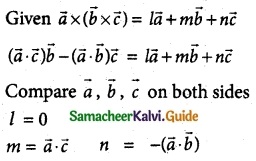
m = 3 + 4 + 3; n = -(2 – 2 + 3)
m = 10; n = -3
l = 0; m = 10; n = -3
![]()
Question 8.
If \(\hat { a }\), \(\hat { b }\), \(\hat { c }\) are three unit vectors such that \(\hat { b }\) and \(\hat { c }\) are non-parallel and \(\hat { a }\) × (\(\hat { b }\) × \(\hat { c }\)) = \(\frac { 1 }{ 2 }\) \(\hat { b }\) find the angle between \(\hat { a }\) and \(\hat { c }\).
Solution:
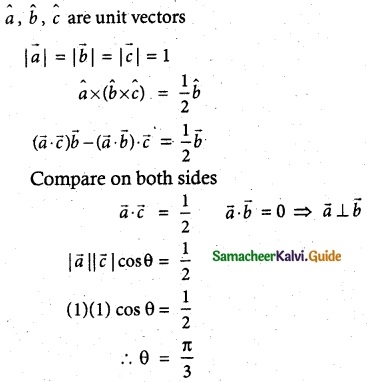
![]()
